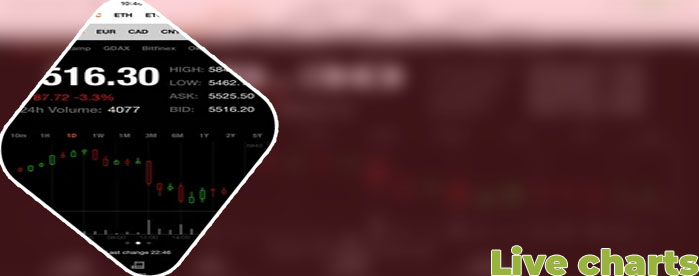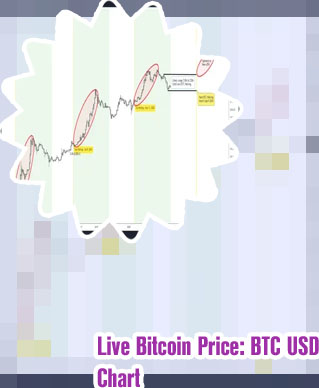
Looking to understand the current trends in the BTC chart? Below are four articles that provide valuable insights and analysis on the topic. From technical analysis to expert opinions, these resources will help you navigate the world of cryptocurrency trading and make informed decisions.
Decoding Bitcoin's Price Movements: A Technical Analysis of the BTC Chart

Bitcoin's price movements have long been a topic of fascination for investors and enthusiasts alike. Understanding the factors that influence the price of BTC can be a valuable skill for anyone looking to navigate the volatile world of cryptocurrency trading. In this insightful book, the author delves into the technical analysis of Bitcoin's price chart to uncover trends and patterns that can help predict future price movements.
The book provides a comprehensive overview of technical analysis tools and techniques, such as moving averages, support and resistance levels, and various chart patterns. By using these tools in conjunction with historical price data, the author demonstrates how traders can make informed decisions about when to buy or sell Bitcoin.
One practical use case of the knowledge gained from this book is illustrated by a trader who successfully identified a bullish trend in Bitcoin's price chart using the techniques outlined in the book. By following the signals generated by the technical indicators, the trader was able to enter a long position at an opportune moment and ultimately profit from the price increase.
Overall, "Decoding Bitcoin's Price Movements" is a valuable resource for anyone looking to deepen their understanding of Bitcoin's price dynamics and improve their trading strategies in the cryptocurrency market. Whether you are a novice trader or an experienced investor, this book offers valuable insights that can help you navigate the
Predicting Bitcoin's Future: Insights from Analyzing Historical BTC Charts
With the increasing popularity of Bitcoin and other cryptocurrencies, it has become crucial for investors and traders to have a deep understanding of market trends and historical data in order to make informed decisions. "Predicting Bitcoin's Future: Insights from Analyzing Historical BTC Charts" offers invaluable insights into the potential future of Bitcoin by examining historical price movements and chart patterns.
The article delves into various technical analysis tools and methodologies used by traders to predict price movements, such as trend lines, support and resistance levels, and moving averages. By analyzing past data, traders can identify patterns and trends that may indicate potential future price movements. One practical use case for this analysis is the ability to identify key levels of support and resistance, which can help traders make more strategic decisions on when to buy or sell Bitcoin.
By utilizing the insights gained from historical BTC charts, traders can gain a competitive edge in the volatile cryptocurrency market and improve their overall trading performance. With a thorough analysis of past price movements and chart patterns, traders can make more informed decisions and potentially increase their profits in the long run. This article serves as a valuable resource for both novice and experienced traders looking to enhance their trading strategies and achieve success in the world of cryptocurrencies.
Expert Perspectives on Bitcoin's Chart Patterns and What They Mean for Investors
Bitcoin's chart patterns can provide valuable insights for investors looking to understand the cryptocurrency market. Experts have identified several key patterns that can help predict future price movements and guide investment decisions. Here are some expert perspectives on Bitcoin's chart patterns and what they mean for investors:
-
Head and Shoulders Pattern: This classic chart pattern consists of three peaks - a higher peak (head) flanked by two lower peaks (shoulders). According to experts, a head and shoulders pattern can signal a trend reversal, with prices likely to decline after the formation of the pattern.
-
Cup and Handle Pattern: The cup and handle pattern is characterized by a rounded bottom (cup) followed by a slight consolidation (handle) before a breakout to the upside. Experts believe that this pattern can indicate a bullish continuation, with prices expected to rise following the breakout.
-
Double Top and Double Bottom Patterns: Double top and double bottom patterns are formed when prices reach a peak or a trough twice before reversing direction. Experts suggest that these patterns can be used to identify potential areas of support and resistance, helping investors make informed trading decisions.
By understanding and recognizing these chart patterns, investors can gain a better understanding of Bitcoin's price movements and trends. It is important to note that chart patterns are not foolproof
Utilizing Trading Tools to Interpret the BTC Chart and Make Profitable Trades
Cryptocurrency trading can be a lucrative venture if approached with the right tools and strategies. One key tool that traders often utilize is technical analysis charts. These charts provide valuable insights into price movements and trends, allowing traders to make informed decisions and maximize their profits. By interpreting these charts effectively, traders can identify potential entry and exit points, set stop-loss orders, and calculate risk-reward ratios.
Here are 3 key items to consider when using trading tools to interpret BTC charts:
-
Moving Averages: Moving averages are a popular tool used by traders to smooth out price data and identify trends. By analyzing moving averages of different time periods, traders can spot potential trend reversals or continuations.
-
Relative Strength Index (RSI): The RSI is a momentum oscillator that measures the speed and change of price movements. Traders often use the RSI to determine overbought or oversold conditions, which can help them anticipate potential price reversals.
-
Fibonacci Retracement Levels: Fibonacci retracement levels are horizontal lines that indicate areas of support or resistance based on key Fibonacci ratios. Traders can use these levels to identify potential reversal points and set profit targets.
